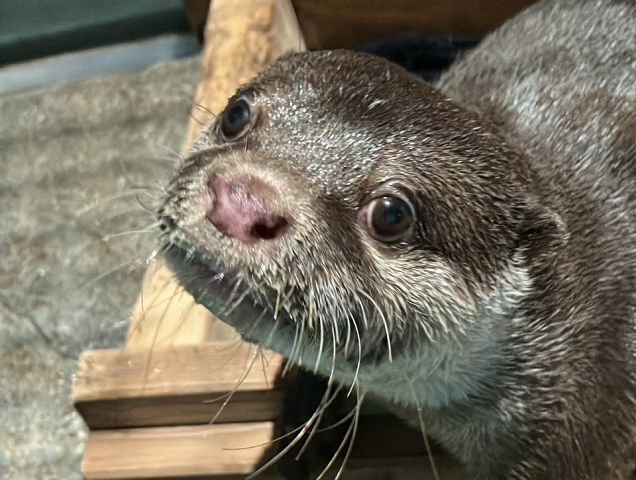Research News
Apr 4, 2025
- Veterinary Science
Suspected fibrocartilaginous embolus in Asian small-clawed otter (Aonyx cinereus)
Asian small-clawed otter (Aonyx cinereus)
This Asian small-clawed otter (Aonyx cinereus) fell down the stairs while sleeping and developed left-sided paralysis.
Credit: Osaka Metropolitan University

An 11-year-old neutered male Asian small-clawed otter fell down the stairs while sleeping, after which it developed left-sided paralysis. Initial treatment involved once daily administration of prednisolone at 0.5 mg/kg.
Despite slight clinical sign improvements by day 10, paralysis persisted. MRI (T2WI) identified a well-defined, hyper-intense lesion on the left side within the spinal cord at the C2-3 intervertebral level. Based on CT and MRI findings, fibrocartilaginous embolus (FCE) was suspected.
Prednisolone was then tapered and by day 23 of illness, the otter was able to walk normally, so prednisolone administration was discontinued. No neurological symptom recurrence was observed, and the course remained favorable.
One year later, a follow up MRI revealed a diminished lesion compared to initial examination.
The results suggest that the possibility of a fibrocartilaginous embolus should be considered when an animal is experiencing acute paralysis with no worsening of symptoms.
Paper information
Journal: The Journal of Veterinary Medical Science
Title: Suspected fibrocartilaginous embolus in Asian small-clawed otter (Aonyx cinereus)
DOI: 10.1292/jvms.24-0462
Authors: Toshiyuki Tanaka, Konomi Ito, Yoshimi Miyagawa, Motomu Morishita, Mizuki Tomihari, Takashi Hasegawa
Published: 7 February 2025
URL: https://doi.org/10.1292/jvms.24-0462
Contact
Graduate School of Veterinary Science
Toshiyuki Tanaka
Email: t-tanaka[at]omu.ac.jp
Takashi Hasegawa
vetmed-hsst56[at]omu.ac.jp
*Please change [at] to @.
SDGs

